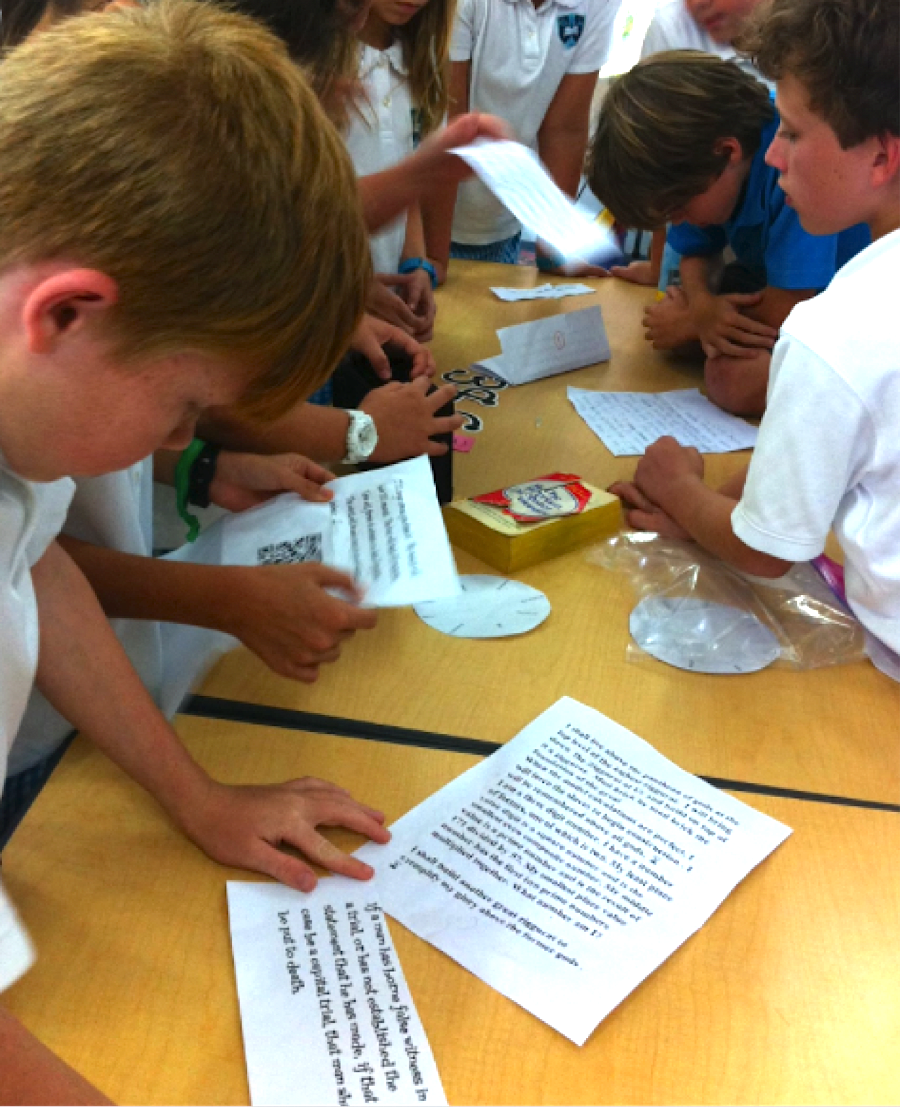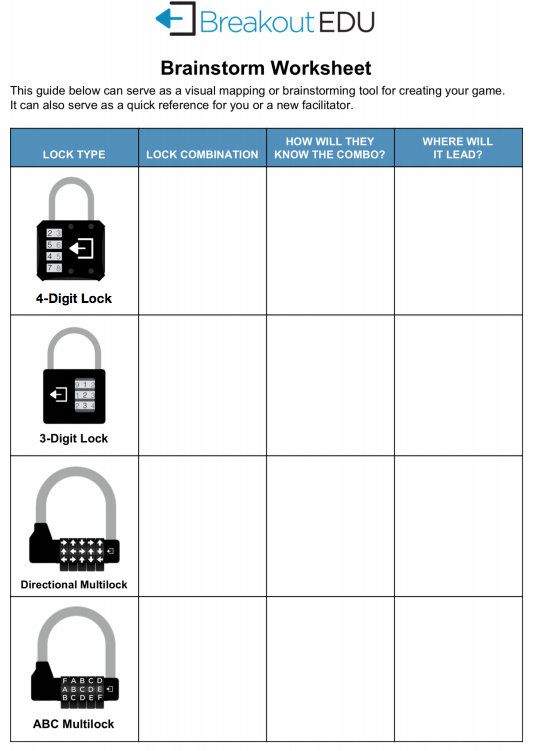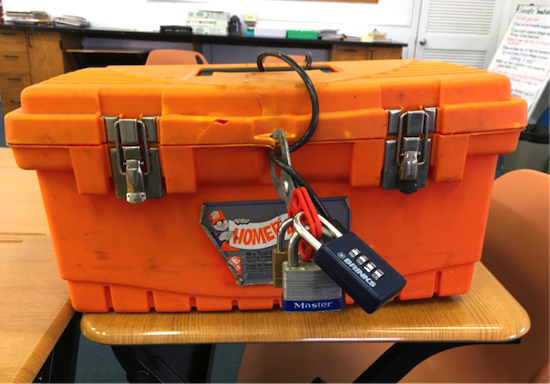Here’s How to Stage a Breakout Game in Class
 By Megan Kelly
By Megan Kelly
The end of the year is an ideal time to try something new in your classroom. Teachers and students have a lot of material to review, but also need to be engaged and energized, especially when it feels like spring break is a distant memory. This is when you might try a breakout game.
Breakout games can also be good ideas for start-of-school, when teachers are looking for ways to begin to build class culture, promote the idea of team effort, and pick up on some of the personality quirks that make middle grades teaching unlike any other.
What are breakout games?
Traditional escape room games are when people are locked in a room and need to find clues and solve puzzles to get out before time is up. Academically focused escape-style scenarios were popularized by Breakout EDU, which was founded in 2015. Since then, students all over the country have been engaged by these games.
How does it work? Simply put, groups of players use teamwork and critical thinking to solve a series of challenging puzzles in order to open a locked prize box before the countdown clock ends.
What are the benefits of using breakout games in your class?
From the student perspective, they are an incredibly fun way to introduce or review content. After our first game, a cheer would erupt whenever my students walked into class and realized it was arranged for a breakout game. A group of students even planned their own breakout game as an end-of-year project, which is the ultimate curricular compliment.
From the teacher’s perspective, breakout games encourage everything we want our students to learn: problem solving, critical thinking, collaboration, communication, risk-taking.
It’s fascinating to see how different students react to the pressure of a time clock and see who takes a leadership role, who persists in the face of frustration, and who can think differently and solve the clues.
I love starting the year with a breakout game in the first week. It tells the students that my class is going to challenge them in exciting ways, and it helps me get to know the students’ personalities in a way that other activities don’t. It also sets the precedent that we are going to reflect frequently in the class.
Breakout EDU has provided their own debrief protocol, but it is up to you to decide what works best with your students. In my class, we discuss what we would do differently in future games, give compliments to students who stepped up during the activity, and share what we learned. Without fail, the reflection time ends with the question, “When can we do it again?”
What does a breakout game look like in the classroom?
Once you’ve gathered your supplies and decided upon a game, you’ll want to prepare your classroom (or media center – see the video below). If possible, do your first game when you have time to set up in advance.
It can take a little while to hide the clues, set up the countdown clock on your projector, and feel ready for the game. There’s no recovering from students flooding in the classroom while you’re still hiding clues!
Breakout EDU at Walker Middle School
It’s going to be loud, but it’s the best kind of noise: the kind that comes from students who are excited, working together, and wouldn’t want to be anywhere else. I’ve found that most students were completely engaged, and if any got off track, their peers were the ones to get them back in the game.
What do I need to host a breakout game?
The Breakout EDU website is the best place to start for resources. Membership is free and gives you access to hundreds of pre-made games, both hands-on and digital. These games have clues, set-up directions, and reflection questions.
Kits are available from the company, which include a variety of locks and other clue-solving tools, as well as access to all the games on their site. The kit is currently priced at $150, but if you want to see if breakout games work in your class before investing in a kit, there are many free digital games that use Google forms and slides for the clues.
If you’re ready to go all in with a physical game, you can buy kits on the website, but they also share a list of items in the kit in case you want to purchase them on your own. (Check out their Getting Started page.)
I decided to take the latter route and cobbled together my kit by borrowing a toolbox, buying supplies at Target and online, and using locks from the school office. It does not have to be an expensive endeavor, and you can find games that do not require some of the more niche items, such as invisible ink pens and UV flashlights.
After trying several pre-made games, I was ready to create my own. The Breakout EDU website has excellent templates to create your own games, both physical and digital. Those are helpful, but you can also just map it out on your own and have a colleague check that it all makes sense. This teacher blog post has helpful ideas for creating clues that align with your subject area and the types of lock you have.
A few final tips
If you hide a clue under a desk in one game, that’s going to be the first place they look in the next game. Mix things up to ensure they are really reading the clues.
If necessary, make a rule that a specific person is the only one who can touch the locks. This prevents students from fiddling with them and trying to crack the codes without doing the work. I found the directional locks to jam frequently, so I avoid using them in games.
You can start small if you like
If it still feels overwhelming to do this activity with a whole class, start with a small group of students during lunch time. They will be natural leaders when you do roll out a game with the entire class.
Questions? Tips of your own? Leave a comment!
Photos by Megan Kelly
_______________________
Megan Kelly has been teaching internationally since 2003, most recently in The Bahamas. She has a Master of Arts in Teaching and is passionate about literacy and learning through play. She tweets at @33megan33 and reviews books. See other MiddleWeb posts by Megan here.







































Wow, what a fabulous way to engage students in the classroom no matter the content area! Thanks for the inspiration and the useful how-to guide.
You always have great ideas! Thanks!